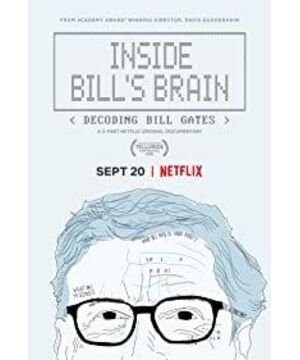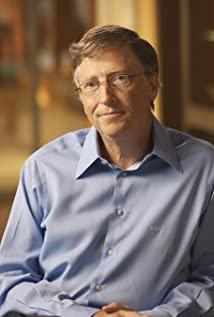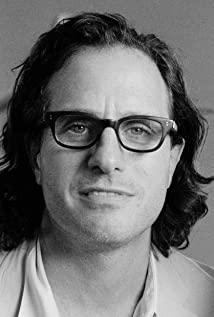Born to be human, I'm sorry!
I thought it was just to read a biography and learn how Bill Gates succeeded. But after watching the short three episodes, I feel that Bill deserves us to learn more than just success. I will think of the words of Shutaro Teruchi to express my feelings, "I am a human being, I am sorry".
This is a very special documentary, using the three major projects initiated by the Bill & Melinda Gates Foundation (Toilet, Polio, Terra Power) as the main line of each episode, while interspersed with Bill Gates biography and his life.
The reason why it feels special mainly comes from two parts, one is the selected content, and the other is the presentation method.
Regarding the content part, if it is someone who has experienced that era, who has typed "dir/w", who is at a loss when they first see the graphical interface of window 3.1 and press the keyboard madly, I believe that Bill Gates has this The life along the way will be more or less understood. The boom in the 1990s and the back-and-forth of the antitrust case, if only to retell these stories, this documentary would be a personal biography at best.
However, the director chose three major projects underway by the foundation, and talked about the ups and downs of these three projects, in order to walk into Bill's life. Stories and imprints from the past are also interspersed with current projects, sometimes as if they were repeated.
It can be seen that these three projects are far from success:
Toilets/Toliets, promising, but still expensive
Polio/Polio, tens of billions of dollars and more cases this year (war on fire)
Terra Power/TerraPower, the deal with China fell through (political wrestling)
When I saw the devastating impact of those war and political factors on the project, I couldn't help but scolded me as an onlooker. The old man would make fun of people, and Bill continued to work hard.
I really like a passage from Bill in the play:
"Sometimes, you do have to say, let's give up.
Sometimes, you also have to say, I need to work harder. "
So what we see in this documentary is not a successful Bill, or the former richest man Bill, but just a forerunner, a man in his 60s who is still working hard for his dreams.
Being human is worth learning.
It is not only this attitude of effort, but also the methods and ideas of facing, exploring and solving problems. Originally, for me, I thought it was enough to use money as a resource, but in the problems faced by Bill, money was never the object of consideration. More is the idea of solving problems, innovation ability and utilization of social resources. The only time I talked to Buffett about money was how to maximize the utility of this resource.
This reminds me of the classic saying, "A problem that can be solved with money is not a problem."
And it can be seen that Bill's thinking background is based on all human beings, all to change the whole world, so he is more willing to invest money in projects that are more needed and more effective at the human level. I will think of the talks between Jack Ma and Zuckerberg. One is thinking about how to occupy more markets and make more money, while the other is thinking about how to change the world.
Think of a narration at the end, "When you meet someone who wants to change the world, someone who never gives up, someone with a mind like Bill's, it's hard not to be moved, but it's hard not to have questions, Is he in too deep a hole? Can he solve these problems? Perhaps eternally unreachable?"
It is true that Bill was far from successful in these projects by traditional standards, but maybe people don't just live for success. Behind these facts, I still have a lot to learn.
Another aspect is the director's technique, which will make people particularly impressive. First, Bill's frontal photos from young to old are very impressive, including the DOS-style title, which is full of memories.
This is just a small idea, I think the most wonderful design is that Bill and the director walk and talk together, and the camera just follows behind and pats the back. Occasionally, I can see the waving of hand gestures, which makes me feel very immersed, as if the audience is there, walking with the two in the countryside, listening to the two chatting.
There is also the editing of editing, which combines these projects with Bill's biography. At the same time, this axis of work is also interspersed with the axis of life. It is very three-dimensional and accompanied by some common parts for Bill. This arrangement is messy.
The choreography culminates in the final part, switching back and forth between the two shots several times in a few minutes. One is the state of work, walking alone on a sheep-gut trail on the barren mountain, and the other is the state of life, sliding a kayak with Melinda on the tranquil lake.
These pictures are memorable for a long time.
Finally, to borrow the last narration, "It's not what you get or even what you give, it's what you become." Learn from Bill and be who I want to be people.
2020-12-1
View more about Inside Bill's Brain: Decoding Bill Gates reviews









